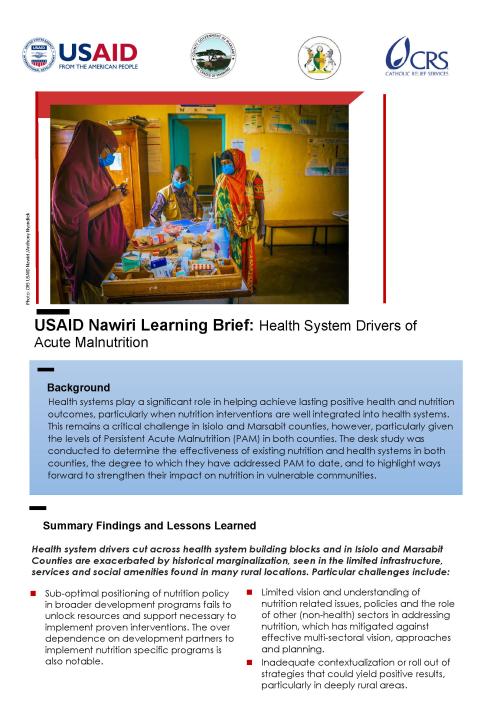This study was conducted to determine the effectiveness of nutrition and health systems and degree to which they have mitigated persistent acute malnutrition to date, and to highlight ways to strengthen their effect on nutrition in vulnerable communities. Findings included that health system drivers cut across health system building blocks and are exacerbated by historic and ongoing marginalization, seen in the limited infrastructure, services, and social amenities found in many rural locations. Government resources are generally not prioritized for health or nutrition, with priority given to staff salaries rather than outreach service delivery, procurement of nutrition commodities, or facility maintenance. The quality and timeliness of nutrition data generated via the health management information system remain poor, limiting use for decision making. Community health volunteers (CHVs) and health facilities are concentrated in urban areas with low malnutrition prevalence instead of hotspots. Limited hours of operation coupled with lack of CHV remuneration result in poorly functioning community health units.
Learning Brief
Full Report(s)
